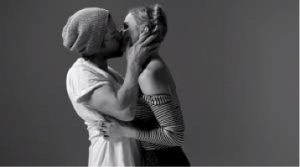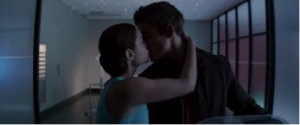-
Frankham, Bettina Louise. “Complexity, Flux and Webs of Connection.” A Poetic Approach to Documentary : Discomfort of Form, Rhetorical Strategies and Aesthetic Experience. (2013): PhD Dissertation, University of Technology Sydney.
Through this article, Frankham explains how lists alienate the elements of a project and how by having links between elements create something a lot more complex then may have been intended. She says that this style of project should be directed towards online exhibition beyond linear narratives as they allow interactivity between the user and creator. When using this with Korsakow, she explains how you can use web-docs as a sort of montage to create a more complex system linking discrete objects. She explains how multiple connections can create a more interesting documentary with different possible outcomes.
I likes the way this document explains the pro’s and the cons of having a link element like koraskow. It demonstrates how we can use these tools to our advantage. Frankham proposes that interactive web-docs can be seen as more active and present form of creating media as more of a thinking process.
Author Archives: nganguyen
Sketch Film
http://www.themediastudents.net/im1/2014/Nga.Nguyen
READING 6
SOAR Soar, Matt. “Making (with) the Korsakow System: Database Documentaries as Articulation and Assemblage.” New Documentary Ecologies Emerging Platforms, Practices and Discourses. Ed. Kate Nash, Craig Hight, and Catherine Summerhayes. Palgrave Macmillan, 2014. 154–73.
This Reading was very interesting to me as I had a great amount of fun playing with Korakow and was intrigued with what other thought about it. It raises a great point on what might the future reserve for Korsakow and with a forever evolving world how it currently faces difficulties when trying to use it on other devices that standard computers. The fact that CD’s are also going out of business and are no longer a part of modern laptops also influence what might happen with such programs.
Through the reading there is a clear understanding of how Korsakow is a form of argument and expression. Giving the creator the possibilities to touch the end user with deeper interactions. Soar quotes Manovich, who, gives a great understanding of how important a logical decision can be and how it will determine the ways in which each clip will be matched to create a relationship between each other. And as a media student, I can directly relate to this and use it in future projects.
After finishing the reading, it was great to get a better understanding of the different uses of Korsakow, how to include different ideas and raise points are we progress through the K-Film.
READING 5
Rascaroli, Laura. “The Essay Film: Problems, Definitions, Textual Commitments.” Framework: The Journal of Cinema and Media 49.2 (2008): 24–47.
In this reading the author Rascaroli explains how there is a continuous and increasing frequency of the essay film. Mainly due to the amount of personal, reflective and new documentaries. Even given that the essay film is immensely popular in many ways. Rascaroli says that is is a type of film that is under theorized because of its dominance of non-fiction films.
Rascaroli continues to show all types of conflicting definitions of film essays and how they are from other theorists before her. It is strange because in a certain way it contradicts her own writing, but I believe that by challenging her own work she will push others to raise questions in the future. At the end of the day, despite all the information given the definition of what is essay film is, is unclear until a theory will prove it.
Film Essay
The intention of this film was that of recreating a differing sensation that is associated with changing relationships and to offer a wide range of viewpoints of characters and events that take place within the relationship. The story was titled a short history of love (2012). The story is basically about two protagonists and their relationship and the idea of a universal relationship that incorporates a wider sense of emotions and involvement.
Most of the content is about the relationship of the two protagonists. A scene where either of them is not available shows the stage at which their emotions were present at that stage of their relationship. Through dialogue this gives the viewer a chance to decide which character’s viewpoints the scene represented if it was not for both of them or neither. The pattern or style used was that of intimacy and classical romance thereby keeping in line with the theme of this film which was, “a short history of love.” Although the shooting style was in line to follow the stylistic qualities of each individual’s interfaces they have maintained a style consistent in giving their project an identity (In Nash, In Hight, In Summerhayes, & Palgrave Connect (Online service) 2014). It does not have the transitions between the interfaces clunky that eliminates distinctive transitions that are unique to the interfaces. They have used the intimacy perspective of the characters because they wanted to show the way the two protagonists or couples see themselves. I think the sound is used in the film as a unifying factor. Also giving a feeling of continuity in the film by having one soundtrack playing in the background. This made the project cohesive and less linear.
The project thumbnails and interfaces are related with the intent to engage the viewer with the sensations involved with every stage in the relationship. The thumbnails where chosen to match with the interfaces and have been made sure that their sizing and placement is consistent with their content (In Nash, In Hight, In Summerhayes, & Palgrave Connect (Online service) 2014).
The layout of the film is intended to trigger an emotion or an idea as the interfaces show that falling and being in love are connected in the placement of the interfaces. An interface depicting a stage in the relationship showing the two protagonists being on separate paths relationship wise has only a few thumbnails. They are however of different sizes and are scattered in a random fashion around the screen. This was done to show the protagonists in different stages of being, influencing and being influenced mostly by their relationship. This included the feelings that the two characters had for each other and also their conflicting self- views. The term “they are” also is successfully broadened to stand for more than just the status of the protagonist’s relationship but for a range of elements. They range from their state of emotions to the direction of their thoughts. The story is narrative driven so a high level of linearity is maintained (In Nash, In Hight, In Summerhayes, & Palgrave Connect (Online service) 2014).
In keeping with the time line of the relationship it is show the flux back and forth in between the strength to weakness. It allows the user to continue forward as well as rewind and visit earlier stages. The producer chose a progression of the narrative without being the one to control the pace or the direction the user would want to take. None of the interface in the project contains a text that explains the relationship between the thumbnails/videos or the gaps that are between the interfaces. No text is required because it wasn’t required to demonstrate the structure and the pattern of the videos. (In Nash, In Hight, In Summerhayes, & Palgrave Connect (Online service). 2014)
Each individual will reinterpret the film in his or her unique way. They made sure that their project only depicts a loose interpretation of a relationship ensuring that the user will come up with the meaning in order to turn the project into a full story that is easy to follow. They also ensured that only a part of the relationship is told while the rest is told via unreliable narration. The user gets the opportunity to decide on which videos are biased and the direction which they lead the project. The user can even choose to be an omniscient narrator by selecting the sections that are of utmost importance than others. Since the project is non-linear with the capacity to travel in any direction throughout time, the user will be able to edit the project by arranging the clips in a certain pattern thus shifting the balance of cause and effect. He or she can as well decide to actively change the order in which the clips follow each other as well as in their own personal capacity as he delivers the meaning from them. The user cannot order these clips manually but can view them as linear or non-linear.
Word Counts: 836
References
In Nash, K., In Hight, C., In Summerhayes, C., & Palgrave Connect (Online service). (2014). New documentary ecologies: Emerging platforms, practices and discourses
Constraint 04
Objects or things that you have that define you
http://youtu.be/TOoCnWP6eCY
Shows a parts of a place or places that define you
http://youtu.be/q9nfvhwqow4
Your immediate family
Constraint 03
Single take about something slow
Single take about something fast
Constraint 02
Light
Not light
Shadow
Constraint 01
Square 1
Square 2
Square 3
Round 1
Round 2
Round 3
Sight and hearing / w3 reading
Image and sound must not support each other, but must work each in turn through a sort of relay
If a sound is the obligatory complement of an image, give preponderance either to the sound, or the image. If equal, they damage or kill each other, as we say of colours.
I always thought the sound and image of a movie was equal, played together. Reading this surprised me as I started to watch films differently. I now realize that one cannot enjoy both at the same time, it would ruin it all together.
A beautiful picture must be supported by a more quiet background sound or we would be distracted from the scene. Same goes for the opposite, When watching a less intense scene, there must be a more distinct sound to keep the viewers focus. Take example of a horror movie with poor sound effects, the viewer will quickly get bored and disinterested, on the other hand when watching something beautiful and colourful such as a scene shot of a scenery the viewer will invest their concentration in what they can see, therefore must not be distracted by the sound.
Sight and hearing. In Bresson, R. Notes on the cinematographer, (p. 50-52). London: Quartet, 1986.



